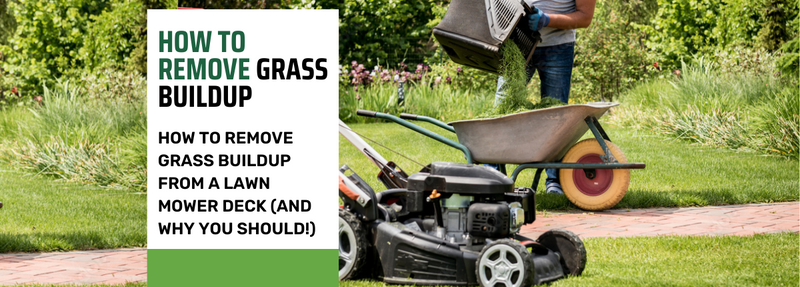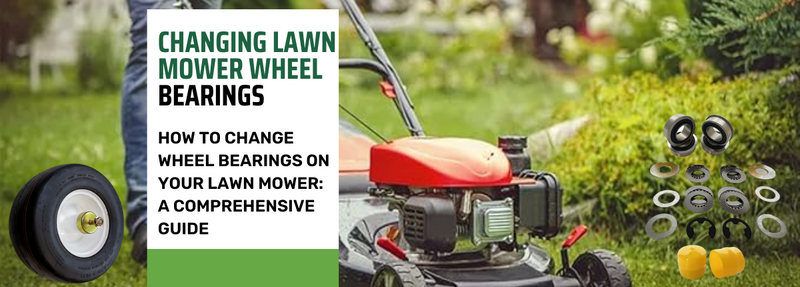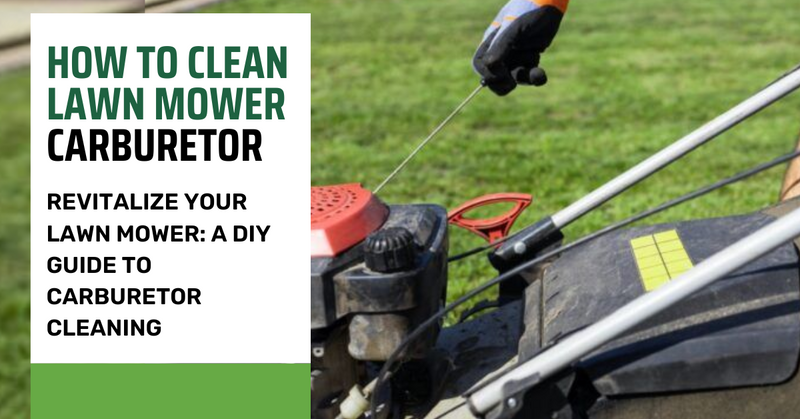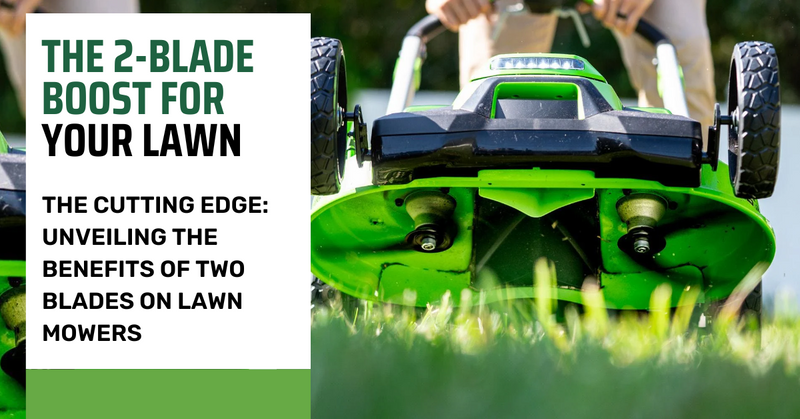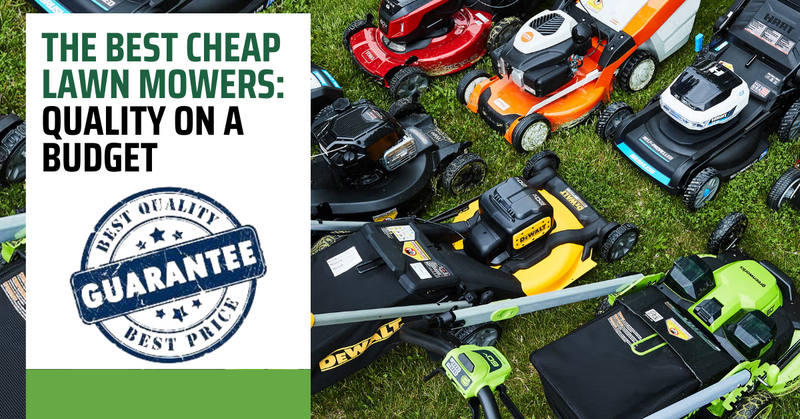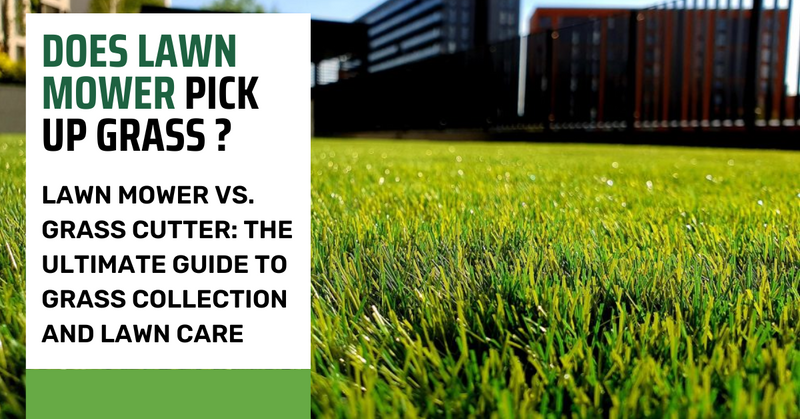

We know lawn mowers inside and out. Our team of lawn care experts has poured years of experience into this comprehensive resource. Whether you're a seasoned pro or a first-time mower owner, we'll guide you through the most common issues and help you get back to enjoying your perfectly manicured lawn.
1) Clean and refill the lawn mower fuel tank
The Problem:
- Old Fuel: Gasoline degrades over time. If your lawn mower has been sitting unused for several months (especially over the winter), the fuel in the tank may have broken down. This degraded fuel can leave gummy deposits in the fuel lines and carburetor, preventing proper fuel flow and hindering the engine's ability to start.
- Contaminated Fuel: Dirt, debris, or water in the fuel can clog the fuel system and prevent the engine from getting the fuel it needs to run.
How to Fix It:
- Safety First: Before working on your lawn mower, disconnect the spark plug wire to prevent accidental starting.
- Drain the Tank: Use a siphon pump or carefully tip the mower to drain the old fuel into an approved gasoline container. Properly dispose of the old fuel at a designated hazardous waste facility.
- Inspect the Tank: Check the inside of the tank for any debris or rust. If necessary, clean the tank thoroughly.
- Refill with Fresh Fuel: Add fresh, clean gasoline to the tank. Consider using a fuel stabilizer to help prevent future fuel degradation, especially if you don't use your mower frequently.
- Prime the Engine: If your mower has a primer bulb, press it a few times to help draw fuel into the carburetor.
2) Clear the Mower Deck of Debris
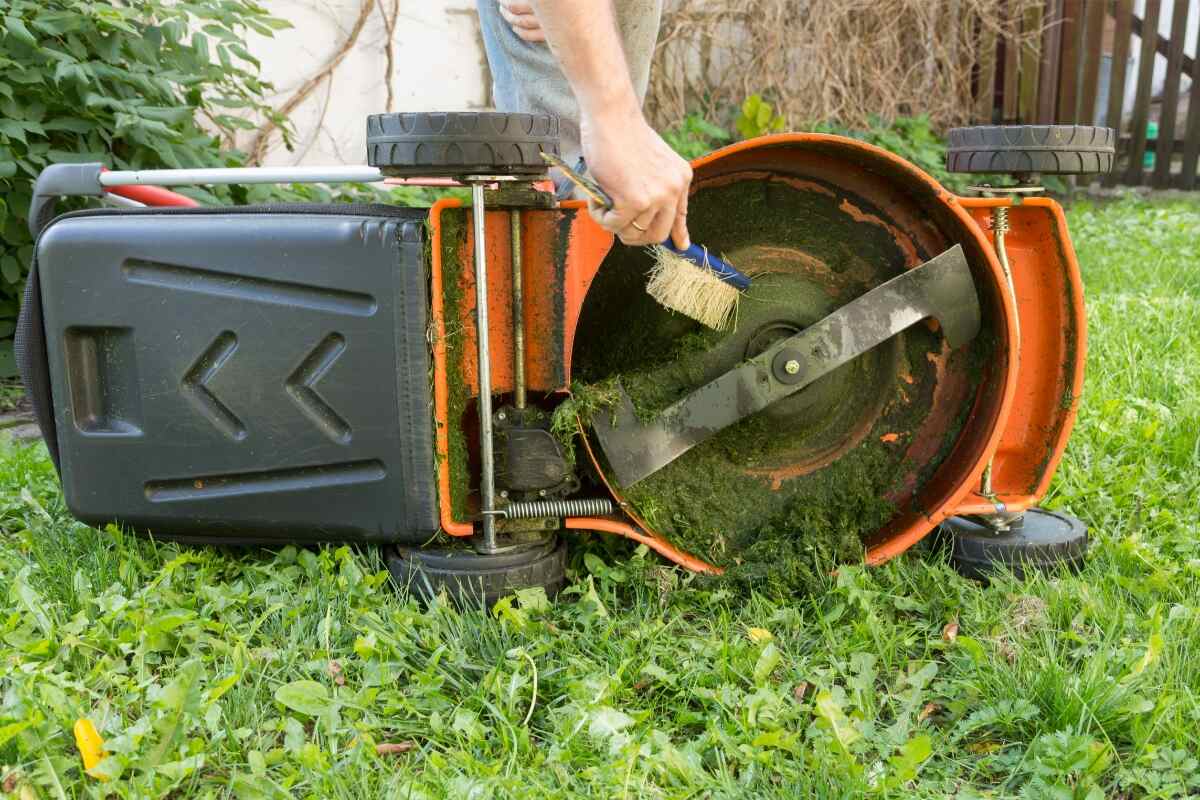
The Problem:
- Clogged Discharge Chute: Grass clippings, leaves, twigs, and other debris can accumulate under the mower deck and clog the discharge chute (where the cut grass exits). This buildup restricts airflow and can cause the engine to overheat or stall. It can also lead to uneven cutting and put extra strain on the mower's engine.
How to Fix It:
- Safety First: Disconnect the spark plug wire and, if your mower has a battery, disconnect it as well.
- Tip the Mower: Carefully tilt the mower on its side, ensuring the carburetor and air filter are facing up to prevent fuel or oil leaks. If your mower is electric or battery-powered, follow the manufacturer's instructions for safe tilting.
- Remove Debris: Use a gloved hand, scraper tool, or brush to remove all debris from the underside of the mower deck, paying close attention to the blades and the discharge chute.
- Clean the Blades: If necessary, remove the blades (following manufacturer instructions) and sharpen or replace them if they are dull or damaged.
- Reassemble and Inspect: Once the deck is clear, reassemble any parts you removed and inspect the mower for any loose or damaged components.
3) Change the lawn mower air filter
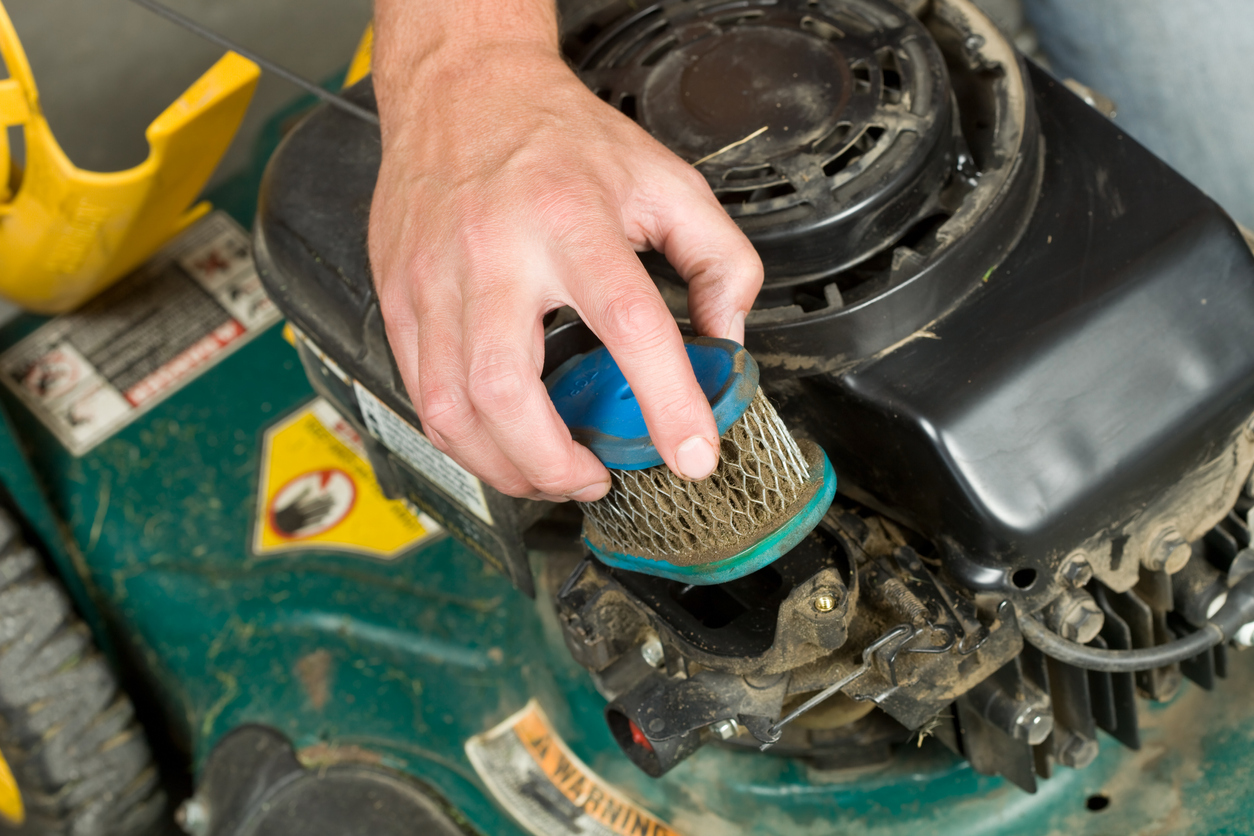
The Problem:
- Dirty Air Filter: The air filter prevents dirt, dust, and debris from entering the engine. Over time, the filter becomes clogged, restricting airflow and causing the engine to work harder. This can lead to poor performance, hard starting, increased fuel consumption, and even engine damage.
How to Fix It:
- Safety First: Turn off the engine, disconnect the spark plug wire, and allow the engine to cool. If your mower is electric or battery-powered, disconnect the battery.
- Locate the Air Filter: The air filter housing is usually a plastic box on the side or top of the engine. Consult your owner's manual if you're unsure.
- Remove the Old Filter: Open the housing and carefully remove the old air filter. Note the orientation of the filter so you can install the new one correctly.
- Inspect and Replace: If the filter is dirty, damaged, or clogged, replace it with a new one that's compatible with your mower model. If your filter is a foam type, it can be washed and reused if not damaged.
- Clean the Housing: Before installing the new filter, use a brush or compressed air to remove any debris from the air filter housing.
- Reassemble: Install the new filter in the correct orientation, close the housing securely, and reconnect the spark plug wire (or battery if applicable).
4) Check the spark plug
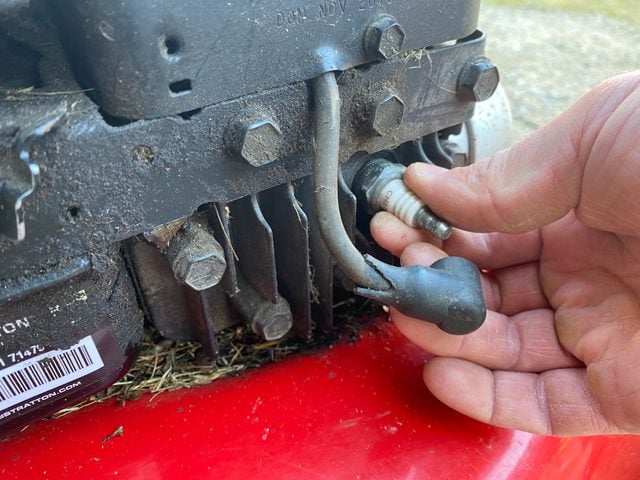
The Problem:
- Fouled or Worn Spark Plug: The spark plug ignites the fuel-air mixture in the combustion chamber to power the engine. Over time, spark plugs can become fouled with carbon buildup or wear out, leading to weak or no spark. This prevents the engine from starting.
- Loose or Disconnected Spark Plug Wire: The wire that connects the spark plug to the ignition system can become loose or disconnected, preventing the spark plug from receiving the electrical current it needs.
How to Fix It:
- Safety First: Turn off the engine, disconnect the spark plug wire, and allow the engine to cool. If your mower is electric or battery-powered, disconnect the battery.
- Locate the Spark Plug: Consult your owner's manual to find the spark plug. It's typically on the front or side of the engine and has a thick rubber boot (the spark plug wire) attached to it.
- Remove the Wire and Plug: Carefully pull the boot off the spark plug, then use a spark plug socket wrench to remove the spark plug.
- Inspect the Plug: Look for signs of wear, damage, or heavy carbon buildup on the electrode.
- Clean or Replace: If the spark plug is only slightly dirty, you can clean it with a wire brush and compressed air. If it's heavily fouled, damaged, or worn, replace it with a new one that matches the specifications in your owner's manual.
- Check the Gap: If you're reusing the spark plug, make sure the gap between the electrodes is correct (check your manual for the correct gap). You can adjust the gap with a gap gauge.
- Reinstall: Reinstall the spark plug, making sure it's tightened to the correct torque (refer to your manual). Reattach the spark plug wire securely.
- Reconnect Everything Else: Reconnect the spark plug wire or battery if applicable.
5) Make sure the fuel filter is clear

- Clogged Fuel Filter: The fuel filter prevents dirt, debris, and rust particles from reaching the carburetor. Over time, the filter can become clogged, restricting fuel flow and starving the engine. This can result in hard starting, poor performance, stalling, or even failure to star
- First, remove the fuel line at the carburetor; gas should flow out.
- If gas does not flow out, confirm that the fuel shutoff valve isn’t accidentally closed.
- Remove the fuel line that’s ahead of the fuel filter inlet.
- If gas runs out freely, there’s a problem with the fuel filter.
- Consult your owner’s manual for instructions on replacing the filter and reassembling the mower.
6) Clear the vent in the lawn mower fuel cap
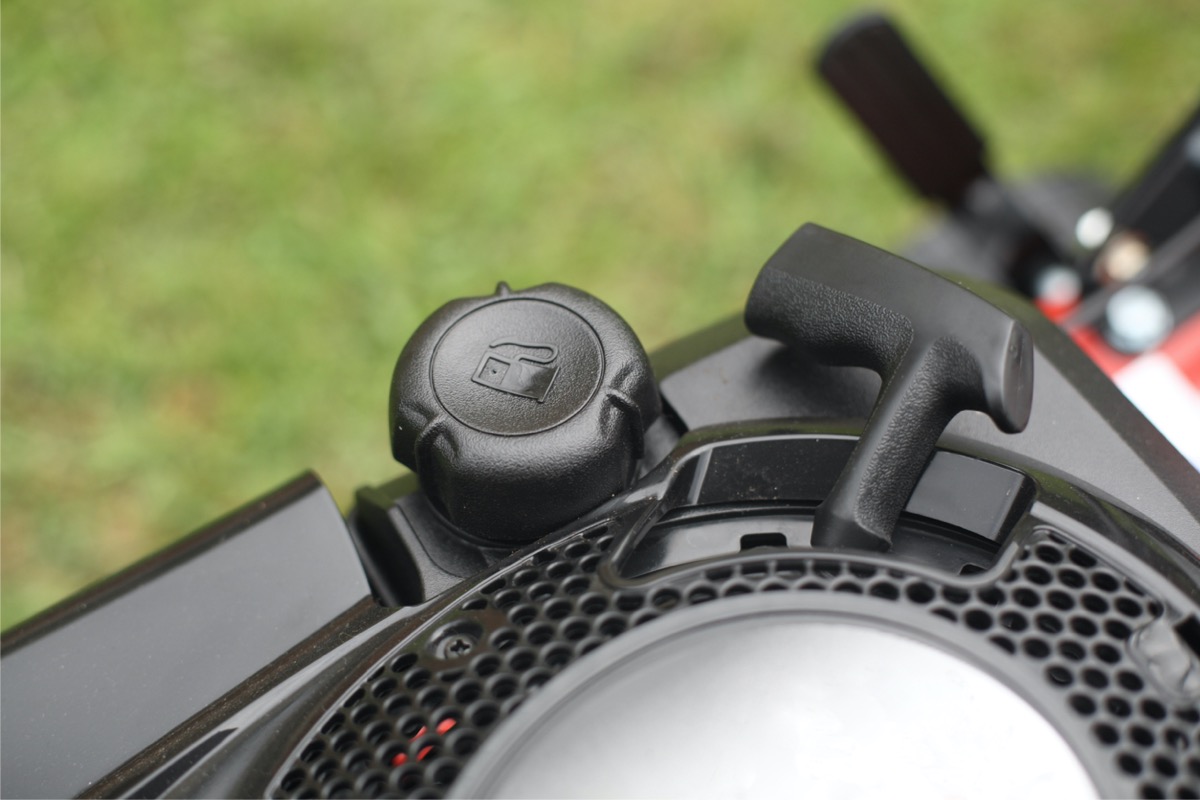
The Problem:
- Blocked Fuel Cap Vent: The fuel cap has a small vent hole that allows air to enter the fuel tank as fuel is used. If this vent becomes clogged with dirt or debris, a vacuum can form in the tank, preventing fuel from flowing to the engine. This can cause the engine to sputter, stall, or fail to start.
How to Fix It:
- Safety First: Turn off the engine and allow it to cool. If your mower is electric or battery-powered, disconnect the battery.
- Locate the Vent Hole: Examine the fuel cap. There should be a small hole (often on the underside of the cap) that acts as a vent.
- Clear the Vent: Use a small wire, pin, or needle to carefully clear any debris from the vent hole. Be gentle to avoid damaging the cap. You can also try blowing compressed air through the vent to dislodge any stubborn particles.
- Test the Cap: Reinstall the cap and try starting the mower. If the engine starts and runs smoothly, the vent was likely the issue.
7) Inspect the safety release mechanism cable.

The Problem:
- Damaged or Disconnected Cable: Most lawn mowers have a safety mechanism that requires you to engage a lever or bar (often on the handle) to keep the engine running. This lever is connected to the engine via a cable. If the cable is damaged, frayed, or disconnected, the engine won't start or may shut off unexpectedly.
How to Fix It:
- Safety First: Turn off the engine, disconnect the spark plug wire, and allow the engine to cool. If your mower is electric or battery-powered, disconnect the battery.
- Locate the Cable: The safety cable is usually attached to the lever or bar on the handle and runs down to the engine. Consult your owner's manual to trace its path.
- Inspect the Cable: Check the entire length of the cable for any signs of damage, fraying, kinks, or stretching. Look for loose connections at both ends of the cable (handle and engine).
- Test the Lever: Engage and disengage the lever while observing the cable's movement. The cable should move freely and smoothly.
- Adjust or Replace: If the cable is loose, you may be able to adjust the tension. If it's damaged or disconnected, it will need to be replaced. Refer to your owner's manual for instructions on how to adjust or replace the cable. It's often easier and safer to have a professional handle this repair.
8) Check to see if the flywheel brake is fully engaged
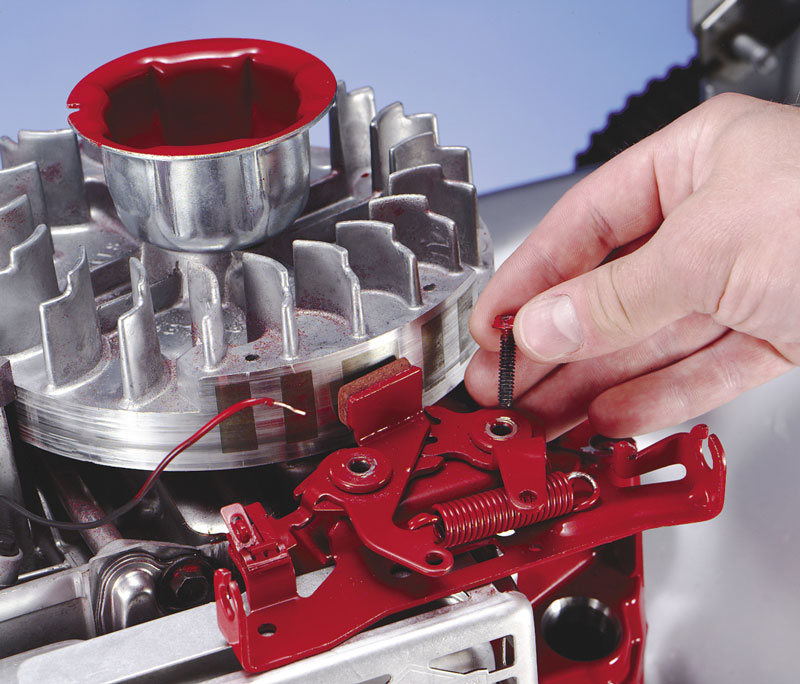
The Problem:
- Engaged Flywheel Brake: Many lawn mowers have a flywheel brake, a safety feature that stops the blade quickly when you release the operator presence control (the bar or lever on the handle). If the brake is partially engaged, it can create resistance, making it difficult or impossible for the engine to start.
How to Fix It:
- Safety First: Turn off the engine, disconnect the spark plug wire, and allow the engine to cool. If your mower is electric or battery-powered, disconnect the battery.
- Locate the Flywheel Brake: Consult your owner's manual to find the location of the flywheel brake. It's typically a metal tab or pad near the engine's flywheel.
- Inspect the Brake: Check to see if the brake is fully disengaged (pulled away from the flywheel) when the operator presence control is engaged. If it's touching the flywheel even slightly, it needs to be adjusted.
- Adjust or Repair: If the brake isn't fully releasing, refer to your owner's manual for instructions on how to adjust or repair it. The adjustment process often involves loosening and tightening bolts or screws to change the brake's position. In some cases, the brake cable might need to be replaced. If you're unsure, it's best to have a professional handle this repair.
Conclusion
A lawn mower that won't start can be frustrating, but with a bit of troubleshooting, you can often get it running again yourself. By addressing common issues like old fuel, clogged components, or a faulty spark plug, you'll be back to maintaining your lush lawn in no time.
Remember, safety always comes first. Before performing any maintenance or repairs, always disconnect the spark plug wire and, if applicable, the battery. If you're unsure about any step or encounter a problem you can't solve, don't hesitate to consult your owner's manual or seek help from a qualified technician.
Regular maintenance is key to preventing many starting problems. Keep your lawn mower clean, use fresh fuel, and replace worn-out parts as needed. With proper care, your lawn mower will reward you with years of reliable service, ensuring your lawn always looks its best.



